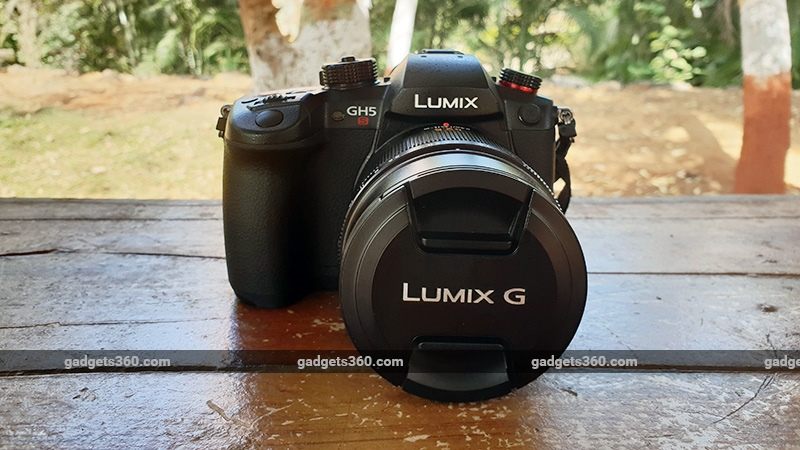
Last year, Panasonicadded the Lumix GH5 to its roster of digital cameras targeted at professional photographers and videographers, and at this year’s CES, the company unveiled a new video-centric edition of the camera called the Lumix GH5S.
Think of this as Panasonic’s answer to Sony’s A7S II mirrorless camera, which is a version of its mirrorless A7 series, also primarily optimised for video. The Panasonic Lumix GH5S is designed specifically for low-light shooting and supports a number of professional recording formats, as well as the connectors that one would ideally expect. Priced at Rs. 1,84,990 for just the body, is the performance that Panasonic claims really worth the hype? We find out.
Panasonic Lumix GH5S design and build
The Lumix GH5S isn’t too different from the GH5 in terms of design. The layout of the buttons is pretty much the same as on last year’s model. There’s a healthy selection of six programmable Fn buttons all around the camera, plus you can assign shortcuts to the control dial at the back, and even add some more to the right side of the the on-screen menu. The body doesn’t feel too heavy by itself, but snap on a lens, and it does get bulky. We really like the grip that the GH5S offers. The hand grip is quite thick with ample rubber cladding, so even those with large hands will find it comfortable to hold.
The shutter button lines up well with your index finger, and has reassuring half- and full-press feedback. There are dials on the top and the back of the camera (besides the main control dial) for changing settings when shooting. The GH5S also has a joystick for flipping through photos in playback mode or adjusting the focus area. All the buttons have good tactile feedback, expect for maybe the control dial at the back, which feels a little flimsy when you rotate it. The video recording button is now bright red and there’s a red ring around the drive mode dial, to distinguish the new model from the older one.

On the top of the camera, we have chunky dials for the drive mode and shooting mode. The latter can be locked into position so you don’t accidentally turn it when shooting. The arrangement of the drive modes is the same as on the GH5, but it should be noted that the GH5S offers 4K burst shooting versus 6K on the GH5, due to its lower-resolution sensor. There’s no built-in flash but there is a hot shoe for attaching an external one.
You get an OLED electronic viewfinder (EVF), which delivers a 100 percent field of view. A sensor lets you automatically switch between the LCD screen and the EVF by bringing the camera to your eye. The EVF’s 3.6 million-dot resolution produces really crisp images, and you can opt for a 120fps refresh rate rather than the default 60fps, for more fluid motion.
You get a decently large 3.2-inch touchscreen which can be articulated fully and has a 1.6 million-dot resolution. Viewing angles are decent and the display doesn’t wash out too badly under sunlight. Touch response is good, and you can quickly zoom in to your images when viewing them, as well as change settings or lock focus.

Coming to the physical connectors, we have sockets for a microphone and headphones, an HDMI output, and a USB Type-C (USB 3.1 Gen1) port on the left of the camera. There’s a flash synchro socket on the front, which can be used for timecode synchronisation with a multi-camera setup. Panasonic includes the necessary cable for this in the Lumix GH5S’s box. There’s a dedicated remote socket on the right, followed by dual SD card slots just below that (SDHC/ SDXC cards are supported at upto UHS-II speeds). The GH5S is weather-sealed, and is built to withstand temperatures down to -10 degrees Celsius. It’s also splash- and dust-resistant. In the box, you get a battery, charger, Type-C cable, BNC conversion cable, shoulder strap, and cable holder.
Panasonic GH5S Lumix specifications and features
The Lumix GH5S uses a 10.2-megapixel micro four-thirds sensor in a mirrorless body, which is around half the resolution of the standard GH5. This allows for larger pixels, which should help the Lumix GH5S in low light, and is what this camera was primarily designed for. The Lumix GH5S also boasts of what Panasonic calls “Dual Native ISO 400, 2500”, which can be a little confusing as these aren’t the actual ‘native’ ISO values.
The GH5S essentially has dual gain circuits for ISO, so the first one is used between ISO 160-800 (Low), while the second one kicks in at ISO 800-51,200 (High). You can expand the ISO range to 80 at the low end and the upper limit can go all the way to 2,04,800. In the settings, you can manually set this to Low or High, or leave it at Auto.

The camera only uses contrast detection autofocus (AF) with 225 points, instead of phase detection. Due to this, continuous autofocus isn’t very quick and you can’t pull off focus transitions very effectively. The GH5S does let you manually set up to three focus points and perform a focus pull between them, but you’ll need to have a fixed frame, and the process is quite cumbersome. The camera also has a multi-aspect sensor, which means it uses the entire width of the sensor without any cropping even if you switch between 4:3, 3:2 and 16:9.
Another highlight feature of the GH5S is its ability to shoot native Cinema 4K (2160×4096) and regular 4K (2160×3840) videos at 10-bit depth, with 4:2:2 chroma sub-sampling. While recording, you can even have a simultaneous 4K feed sent to an external monitor via the HDMI port. There are plenty of recording formats (MPEG-4, H.264, H.265) and codecs (AVCHD, MP4, HEVC, LPCM, MOV) to choose from, which means that there’s good flexibility when shooting. 4K video tops out at 60fps at 150Mbps, or you can opt for a higher bit-rate of 400Mbps (for better details), but only at 24fps.
You can record high-framerate (HFR) videos at 1080p, up to 240fps. Videos shot in this mode look very good, with nice slow-motion effects. The camera also has advanced shooting modes such as V-Log L, HLG (Hybrid Log Gamma for HDR) and Like709, which can be graded later in post-production using LUTs (Look Up Tables) to achieve the desired effect.

The GH5S supports burst shooting of up to 12fps and can even do 14-bit RAW burst shots at 7fps with AF-C or 11fps with AF-S. The 4K Photo drive mode lets you shoot bursts of 30fps or 60fps photos (8-megapixel resolution), which are saved as MP4 files. Once the recording is done, you can browse through the individual frames that are captured and save the desired ones. We found this to be very useful when shooting fast-moving objects or actions, and the end result is very good.
You can also switch to a 4K Burst (S/S) mode, which requires you to press the shutter button for a second time when you want to stop recording. 4K pre-burst saves buffered footage from one second before and after you press the shutter. There’s also a focus stacking mode that lets you shoot the same burst of photos as the 4K Photo mode, but you can select which part of the frame you want in focus later on, before saving your chosen stills.
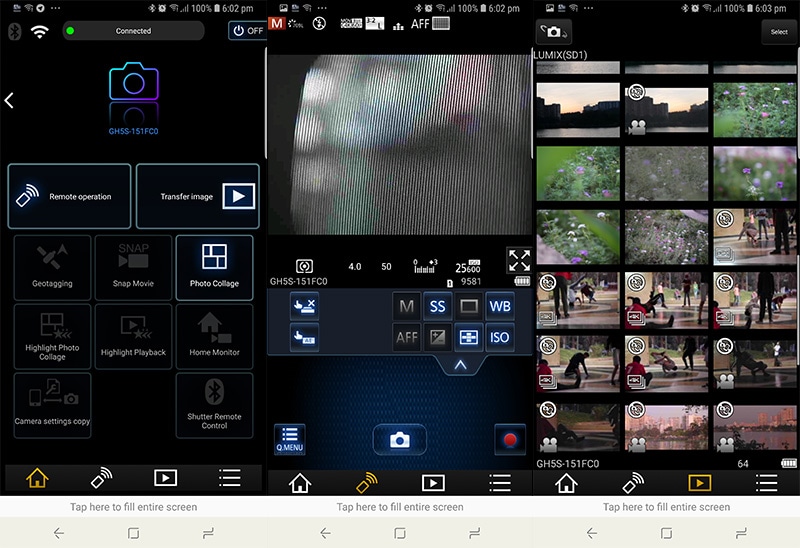
However, Panasonic has left one feature out of the Lumix GH5S, which is an in-body image stabilisation system. This might seem like a huge letdown for those who will be shooting without a tripod, but the company seems to be banking on the fact that most of this camera’s target audience would use it on a gimbal or a stabiliser rig of some sort.
Other capabilities include a maximum shutter speed of 1/8000 seconds; auto, aperture, focus, and white balance bracketing modes; creative scene modes; built-in dual-band Wi-Fi and Bluetooth 4.2; and an anamorphic video mode for use with anamorphic lenses. The Lumix GH5S can also be used with the Panasonic Image app on Android and iOS to control most of its settings and have images automatically transferred to your smartphone. The app is designed well and doesn’t take long to get used to.
Panasonic GH5S Lumix performance and battery life
For testing the Lumix GH5S, Panasonic sent us a 42.5mm f/1.2 lens, which itself has a sticker price of Rs. 1,01,990. It features toggle switches for optical image stabilisation and Manual/ Auto focus. There’s a focus ring and an aperture ring, the latter of which has a nice ‘clicky’ motion. The lens produces some really sharp images and is great for portraits, thanks to the super-wide f/1.2 aperture. However, it adds quite a bit of heft to the camera as it weighs 425g on its own. Also, street photography was a bit inconvenient due to its 85mm (35mm equivalent) effective focal length.
 Panasonic Lumix GH5S ISO test
Panasonic Lumix GH5S ISO test
We begin with our ISO test, where noise is virtually non-existent till about ISO 3200. Jumping straight to ISO 6400, we see a bit of noise in the shadow regions under the colour pencils, but not much on the pencils themselves. At ISO 12800, sharpness begins to reduce and the details get mildly blotchy, but noise is still very much in check. ISO 25600 introduces some grain on the pencils, and details are slightly less pronounced. Finally, at ISO 51200, the edges of the pencils aren’t clearly defined anymore and the image is quite grainy, but not completely unusable, which is nice. We can see that the dual-gain ISO implementation does make big impact at higher ISO levels.
The GH5S isn’t the best camera for still photography, mainly due to the low resolution of its sensor, which doesn’t give you too much creative freedom. There’s not a lot of flexibility if you want to crop shots later on, although having said that, this camera does manage to capture good details when shooting in daylight. We didn’t notice any of the usual issues such as chromatic aberrations or barrel distortion. You can enable HDR in the Settings menu, which automatically combines three consecutive shots with varying exposures into a single image. In landscape shots, the sensor manages good dynamic range and white balance, and light metering is handled well even under harsh sunlight. The level of detail is good even with large objects in the distance.
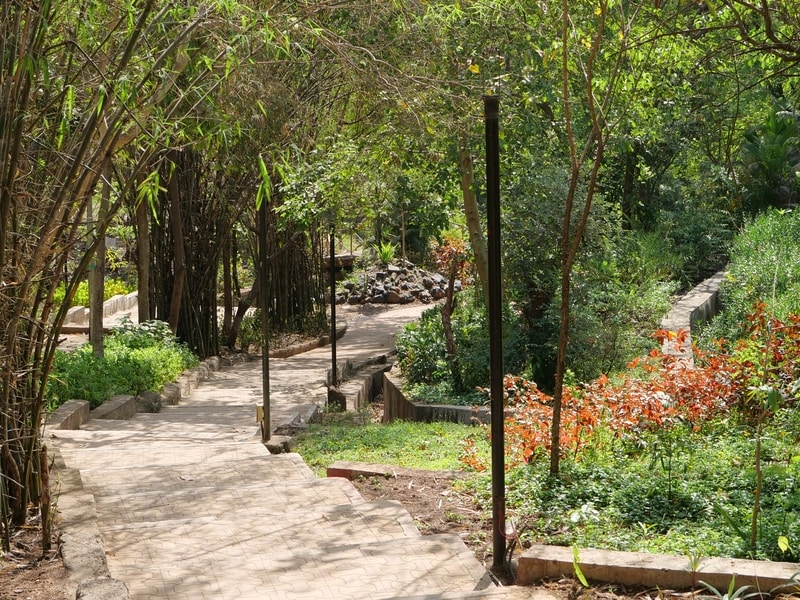 Panasonic Lumix GH5S camera sample: ISO 160, f/5.6, 1/160, 43mm (tap to see full-sized image)
Panasonic Lumix GH5S camera sample: ISO 160, f/5.6, 1/160, 43mm (tap to see full-sized image)
 Panasonic Lumix GH5S camera sample: ISO 320, f/2, 1/4000sec, 43mm (tap to see full-sized image)
Panasonic Lumix GH5S camera sample: ISO 320, f/2, 1/4000sec, 43mm (tap to see full-sized image)
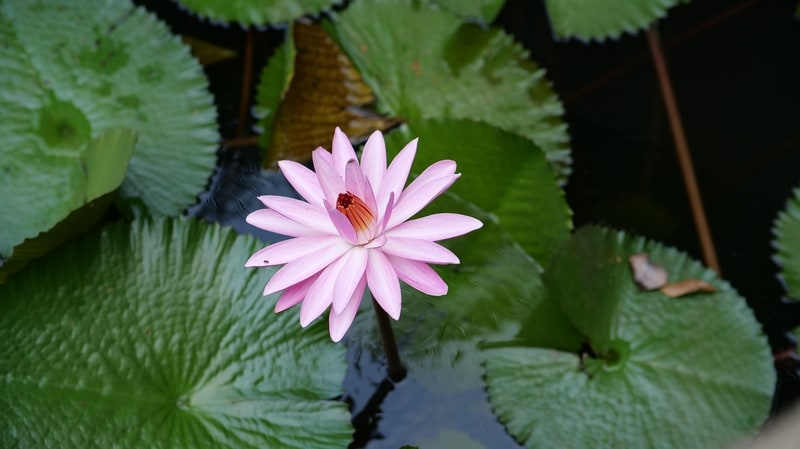 Panasonic Lumix GH5S sample: ISO 160, 1/400sec, 43mm (tap to see full-sized image)
Panasonic Lumix GH5S sample: ISO 160, 1/400sec, 43mm (tap to see full-sized image)
Macro shots are also handled nicely, and were especially fun to shoot with such a lens. Colours are punchy with good levels of saturation and edges around our subjects were often sharp and precise. More than the standard burst mode, we wound up using the 4K Photo mode for burst shooting since it’s definitely more effective in capturing fleeting moments and we managed to get some pretty good results. The focus stacking drive mode also works well, as you can shift focus to any part of the image when you preview it on the camera and then save that desired still. Continuous AF is a bit slow due to the contrast detection system but the camera is fairly quick to lock focus otherwise. You get different focusing modes like face/ eye tracking, tracking focus, 225-area, custom area, and 1-area.
The GH5S boasts of being able to be focus on a subject even in -5EV lighting conditions, and while you can do this, the focusing speed is slower. This camera also manages to deliver good dynamic range even in low light. Details are fairly well preserved and the varied colours of the street and traffic lights in our sample picture were captured nicely. Finer details are a little harder to make out due to the relatively low resolution, even at a 100 percent crop. Close-up shots also fared very well, and we managed sharp images with well-defined edges. The latter could be down to the lens but overall, macros in low light were quite satisfactory.
Besides the PASM shooting modes, the GH5S also has an Auto mode and an Effects mode. The latter lets you cycle through a number of popular filters including monochrome, soft focus, miniature, etc, and when used appropriately, they yield some interesting results. There are also three custom shooting modes (C1, C2, C3), which can be set up for different shooting situations.
 Panasonic Lumix GH5S camera sample: ISO 5000, f/1.2, 1/500sec, 43mm (tap to see full-sized image)
Panasonic Lumix GH5S camera sample: ISO 5000, f/1.2, 1/500sec, 43mm (tap to see full-sized image)
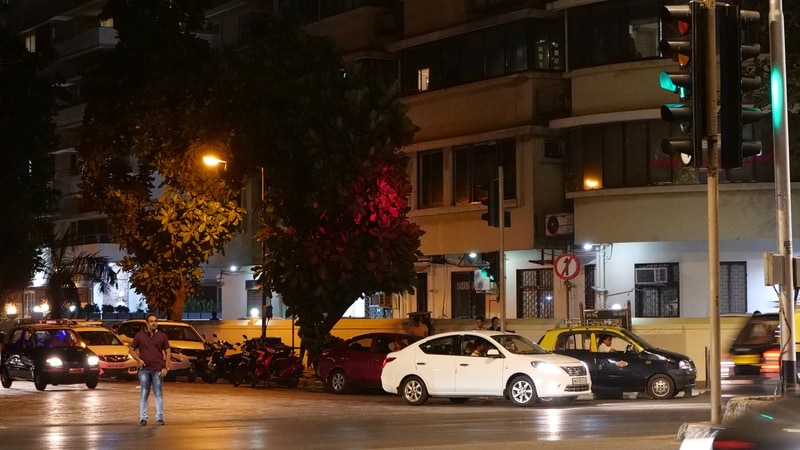 Panasonic Lumix GH5S camera sample: ISO 6400, f/3.2, 1/50sec, 43mm (tap to see full-sized image)
Panasonic Lumix GH5S camera sample: ISO 6400, f/3.2, 1/50sec, 43mm (tap to see full-sized image)
 Panasonic Lumix GH5S camera sample: ISO 4000, f/2.2, 1/60sec, 43mm (tap to see full-sized image)
Panasonic Lumix GH5S camera sample: ISO 4000, f/2.2, 1/60sec, 43mm (tap to see full-sized image)
The Creative Video mode is the one you want to be in to take advantage of the advanced shooting modes like HFR. The problem with shooting at a high framerate is that the focusing system defaults to manual focus, which is a little strange. One way to get around this is to quickly switch to another mode, lock focus on your subject, and then jump back to Creative Video mode and begin shooting. The slow motion effect is very nice but you’ll have to make sure you have ample lighting. Video quality in daylight is excellent. The level of detail is very good, and colours have a neutral tone to them. Cinema 4K video shot at 60fps had rock-steady framerates.
The Lumix GH5S’s true potential is realised once you start shooting in low light. With the ISO set to Auto, we managed to get excellent dynamic range in our test footage. The reflections of the distant neon lights on the water are captured in great detail and as you can see in our test footage, there’s no real visible noise. We shot the same scene again, but this time, manually bumped the ISO up to see how far we could go before noise became intolerable. Impressively, the Lumix GH5S gives you very usable footage till about ISO 12800, after which chroma noise is visible and at the highest ISO and footage suffers more the darker it is. We did notice a bit of focus hunting here too, which can be an issue if your subject moves sporadically or if you’re panning a lot.
The Settings menus are laid out well and are easy to navigate. The settings for still and video shooting are grouped separately, followed by advanced settings for exposure, focus, re-mapping the shortcut buttons, and wireless connectivity. There’s a ‘Night Mode’ which adds a red tone to the viewfinder and EVF to make it easier to compose shots in the dark. The zoom level of Manual Focus Assist is now 20x, so you can accurately focus on smaller distant objects too.
We found that this camera’s battery held up well with regular use. The rated battery life ranges between 440 and 1,300 shots per charge, depending on how much you use the LCD screen and EVF, and the time-out set for sleep mode. We managed to drain the battery halfway after about 200 shots, which included stills, 4K videos and lots of 4K Photo bursts, which is not bad. With only stills, we easily managed to cross 400 shots on one charge.
Verdict
The Panasonic Lumix GH5S is easily one of the best digital cameras for low-light photography that we’ve come across, with impressive high-ISO performance. It also supports plenty of professional video formats and physical connectivity options, which would make it easy to integrate with most pro setups. The camera is aimed at videographers and it certainly does not disappoint. If you need high-quality video recording with extensive support for industry video standards, the GH5S may well be worth the investment.
Besides shooting really high quality 4K footage, the camera also excels at burst shots through the 4K Photo mode, has a very good EVF, is well built, and features plenty of advanced options that will keep most professional users happy. It’s not the best camera for general-purpose stills though, due to the low-resolution sensor, and continuous autofocus is a bit slow, which are things to keep in mind.
Price (MRP): Rs. 1,84,990 (body only)
Pros
- Weather-resistant body
- Wide range of professional features
- 4K video looks great
- Impressive high-ISO performance
- Nifty burst shooting modes
- Good battery life
Cons
- Continuous AF isn’t quick
- Lacks in-body stabilisation
- Low resolution sensor limits cropping prospects
Ratings (Out of 5)
- Build/Design: 4.5
- Image quality: 4
- Video quality: 4.5
- Performance: 4
- Value for money: 3.5
- Overall: 4
[“Source-gadgets.ndtv”]




